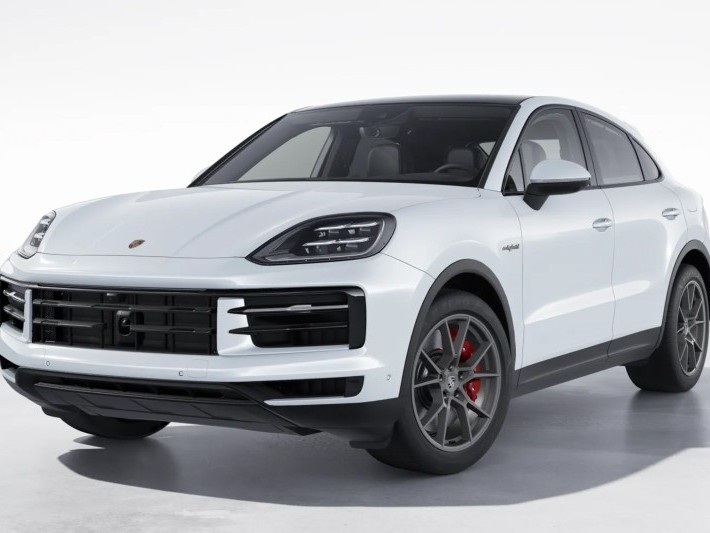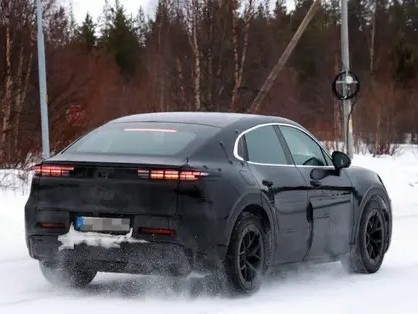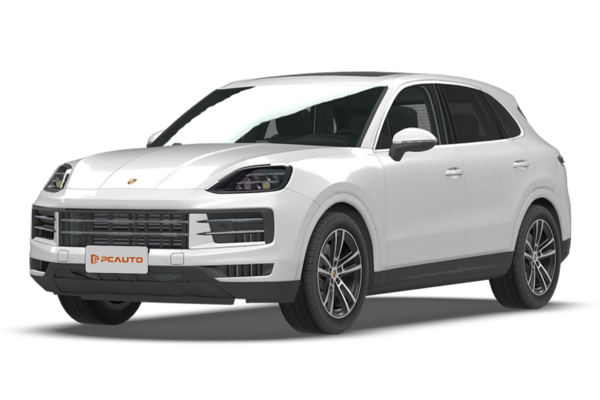Q
What is the Mainentance Cost of Porsche Cayenne? Get Idea Here
As a luxury SUV, the Porsche Cayenne has relatively high maintenance costs in Malaysia, which mainly depend on the model year, power configuration, and maintenance items. The cost of regular maintenance such as oil changes and filter replacements is approximately between RM1,500 and RM3,000, while major maintenance like transmission fluid replacement and brake system inspections can reach over RM5,000. The specific costs still need to refer to the official maintenance manual or the quotes from authorized service centers.
In addition, Porsche models usually use high - performance components. Therefore, the cost of replacing vulnerable parts such as tires and brake pads is also higher than that of ordinary brands. It is recommended that car owners perform regular maintenance to extend the vehicle's lifespan and maintain optimal performance.
For Malaysian car owners, choosing an officially authorized Porsche service center for maintenance not only ensures the use of original parts but also provides professional inspection services. Although the cost is higher, it can effectively avoid potential problems caused by non - regular maintenance.
If car owners want to further control costs, they can also consider purchasing Porsche's maintenance packages. These packages usually offer certain discounts and cover multiple basic maintenance items.
Special Disclaimer: This content is published by users and does not represent the views or position of PCauto.
Related Q&A
Q
What Segment is Porsche Cayenne?
The Porsche Cayenne belongs to the luxury mid - size SUV (Sport Utility Vehicle) segment. In Malaysia, it is often classified as a "D - Segment SUV" or a "large luxury SUV". Its main competitors include German models such as the BMW X5 and Mercedes - Benz GLE, as well as high - end brands like the Range Rover Sport.
Thanks to its outstanding performance, luxurious interior, and the unique sporty DNA of the Porsche brand, the Cayenne holds an important position in the high - end SUV market in Malaysia. It is especially favored by consumers who seek both driving pleasure and practicality.
It's worth noting that the Cayenne offers a variety of powertrain options in Malaysia, including traditional fuel - powered versions and plug - in hybrid (PHEV) versions, meeting different users' needs for performance and environmental protection. At the same time, the standard - equipped Porsche Traction Management (PTM) system is particularly suitable for driving on slippery roads in Malaysia's rainy climate, demonstrating the unique positioning of a luxury SUV that combines daily practicality with sporty handling.
For Malaysian consumers, this type of vehicle can not only meet the needs of family outings but also reflects the owner's pursuit of quality of life.
Q
What is the Reslae Value of Porsche Cayenne?
The Porsche Cayenne has a relatively high second - hand resale value in Malaysia. This is mainly due to its strong brand premium, reliable performance, and high market demand. Depending on the vehicle's age, mileage, configuration, and maintenance condition, generally, a 3 - year - old Cayenne has a resale value of about 60% to 70%, while a 5 - year - old one is around 50%. If the vehicle is well - maintained and equipped with popular optional features such as the Sport Chrono package or high - end interior materials, the resale value will be further enhanced.
Malaysian consumers particularly favor German luxury SUVs. The Cayenne, with its balance between sporty handling and luxurious practicality, is more popular in the second - hand market compared to similar models. However, it's necessary to note the potential impact of the local climate on rubber parts and electronic devices. A regular maintenance record can significantly increase the resale value.
In addition, the plug - in hybrid version of the Cayenne launched in recent years is gradually gaining popularity in Malaysia. Its environmental - friendly features may have a positive impact on future residual values. It is recommended that potential buyers purchase cars through the official certified pre - owned vehicle channels to enjoy the original factory warranty service. At the same time, they should pay attention to the price trends on local second - hand car platforms to seize the best trading opportunities.
Q
How Many CC is Porsche Cayenne?
The Porsche Cayenne offers a variety of engine options in the Malaysian market. The specific engine displacement (CC) varies depending on the model and year. For example, the current base - model Cayenne is powered by a 3.0 - liter V6 turbocharged engine (approximately 2995cc), while the Cayenne S features a 2.9 - liter V6 twin - turbocharged engine (about 2894cc). The high - performance Cayenne Turbo GT is equipped with a 4.0 - liter V8 twin - turbocharged engine (around 3996cc).
Engine displacement directly affects power output and fuel efficiency. However, Porsche has achieved high power with small - displacement engines through turbocharging technology. For instance, the 2.9 - liter engine in the Cayenne S can produce 440 horsepower, which is more powerful than many naturally aspirated V8 engines.
Malaysian consumers should note that engine displacement impacts road tax calculations. Vehicles with large displacements, like the V8 versions, incur higher road tax costs. Nevertheless, the Porsche Active Suspension Management (PASM) system, standard across all Porsche models, can adapt to local road conditions, balancing comfort and handling.
In addition, the hybrid - version Cayenne E - Hybrid combines a 2.0 - liter or 3.0 - liter engine with an electric motor. It reduces emissions while maintaining performance, making it a great choice for environmentally - conscious buyers.
Q
What is the Engine in Porsche Cayenne?
The Porsche Cayenne currently offers a variety of high - performance engines to meet different driving needs. In the Malaysian market, the commonly seen ones include the 3.0 - liter V6 turbocharged engine (340 horsepower), the 2.9 - liter V6 twin - turbocharged engine (440 horsepower), and the top - of - the - line 4.0 - liter V8 twin - turbocharged engine (550 horsepower). All of them are paired with an 8 - speed Tiptronic S transmission, balancing power and fuel economy.
It's particularly worth mentioning that the Cayenne also offers a plug - in hybrid version, which combines a 2.0 - liter turbocharged engine with an electric motor. The combined output can reach 463 horsepower, making it a great choice for environmentally - conscious Malaysian consumers.
These engines all adopt Porsche's advanced technologies, such as variable - geometry turbochargers and intelligent thermal management systems, ensuring stable performance in tropical climates. Given Malaysia's mountainous terrain, the Cayenne's engines have the characteristic of high torque at low revs (for example, the V8 version can output 770 Nm of torque at 1800 rpm), providing excellent climbing ability. The standard - equipped PDCC dynamic chassis control system further enhances handling.
It's important to note that Porsche engines are made of special alloy materials. When used with Ron97 gasoline recommended by the Malaysian authorities, they can maximize performance and extend the engine's lifespan. It is recommended that car owners regularly visit authorized service centers for maintenance to keep the vehicle in optimal condition.
Q
What is the Gearbox Type of Porsche Cayenne?
The types of transmissions offered for the Porsche Cayenne in the Malaysian market mainly depend on the specific model and year. Currently, most versions are equipped with the 8 - speed Tiptronic S automatic transmission. This transmission is well - known for its smooth gear shifts and quick response, making it especially suitable for SUVs like the Cayenne that combine both sportiness and luxury. Some high - performance models, such as the Cayenne Turbo, may be fitted with the same transmission with a more sport - oriented tuning.
It's worth noting that although Porsche's PDK dual - clutch transmission is widely used in sports cars like the 911, it's not applied to the Cayenne series due to considerations of torque capacity and comfort. For Malaysian consumers, the reliability of the Tiptronic S transmission has been proven in tropical climates and various road conditions, and local authorized dealers can provide professional maintenance. If you're considering a used car, be aware that older models before 2018 might have a 6 - speed transmission, which is slightly less fuel - efficient than the new ones.
As a core component, it's recommended to regularly replace the original - factory - specified fluids to ensure its longevity. Additionally, given the hilly road conditions in Malaysia, you can make good use of the manual mode or paddle shifters to enhance your driving pleasure.
Q
What is the PCD Size of Porsche Cayenne?
The PCD (Pitch Circle Diameter) of the Porsche Cayenne is 5x130. This means that its wheels have 5 bolt holes, which are evenly distributed on the circumference with a diameter of 130 millimeters. This specification applies to most Cayenne models, including the commonly - seen Cayenne S and Turbo versions in Malaysia. Understanding the PCD size is very important when it comes to replacing wheels or upgrading the braking system, as an incorrect PCD will either prevent the wheels from being installed or pose a risk to driving safety. Malaysian car owners also need to pay attention to the wheel offset (ET value) and the center bore diameter when modifying their cars to ensure that the new wheels are a perfect fit for the vehicle. Moreover, choosing wheels from a reputable manufacturer and regularly checking the bolt torque can effectively prevent the risk of wheel loosening during high - speed driving. If you're unsure about the specifications, it's recommended to consult a Porsche - authorized dealer or a professional modification shop. They can provide solutions that meet the original factory standards, ensuring that the vehicle's performance and safety remain unaffected.
Q
Does Porsche Cayenne Have Apple Carplay?
Yes, the Porsche Cayenne does support Apple CarPlay. This feature has become a standard in recent models, allowing Malaysian car owners to easily connect their iPhones to the vehicle's infotainment system and enjoy convenient operations such as navigation, music, and calls. Apple CarPlay can be connected via wired or wireless methods, depending on the model year and configuration. Wireless connection is more common in newer Cayenne models.
In addition to Apple CarPlay, the Cayenne also supports Android Auto to meet the needs of different mobile phone users. Porsche's infotainment system is well - known for its smoothness and high - end feel. Using it in conjunction with CarPlay can further enhance the driving experience. For Malaysian users, this feature is especially useful as they can combine local map applications like Waze or Google Maps for real - time navigation and avoid congested roads.
Moreover, Porsche continuously optimizes system compatibility through software updates to ensure that car owners can enjoy the latest technological experiences. If you're considering buying a Cayenne, you can rest assured that its smart connectivity features can meet your daily needs. At the same time, Porsche's after - sales service network in Malaysia is quite comprehensive, providing reliable technical support for car owners.
Q
What is the Tyre Brand of Porsche Cayenne?
The original tire brands of the Porsche Cayenne usually vary according to the vehicle's configuration and the year of production. Common original - equipment tire brands include Michelin, Pirelli, and Goodyear. For example, Michelin's Latitude Sport 3 or Pirelli's P Zero series. These high - performance tires are specifically designed for the Cayenne's powerful engine and handling requirements, providing excellent grip and wet - weather performance.
In Malaysia, due to the hot and rainy climate, it is recommended that car owners choose tires with good drainage and high - temperature resistance. They should also regularly check the tire pressure and wear to ensure driving safety. If you need to replace the tires, besides the original brands, you can also consider other high - end brands such as Continental or Bridgestone. They also offer SUV - specific tires suitable for the Cayenne, but you need to make sure that the tire specifications and load indexes are consistent with the original ones.
In addition, the road conditions in Malaysia are complex. The wear resistance and comfort of the tires are also important factors to consider. It is advisable to consult a professional tire shop or a Porsche - authorized service center for more accurate recommendations.
Q
Is Porsche Cayenne a Good Car? Learn the Pros and Cons Here
As a luxury SUV, the Porsche Cayenne is very popular in the Malaysian market. Its advantages include strong power performance. In particular, the V8 engine equipped in the Turbo version can provide an excellent acceleration experience. At the same time, Porsche's chassis tuning technology ensures a balance between driving pleasure and comfort, making it suitable for Malaysia's diverse road conditions.
In terms of interior, the Cayenne uses high - quality materials and fine craftsmanship. Technological features such as the 12.3 - inch touchscreen and advanced driving assistance systems also enhance the convenience of using the vehicle.
However, its drawbacks are the relatively high selling price and maintenance cost. Also, due to its large body size, it may not be very flexible on narrow roads in cities like Kuala Lumpur.
For Malaysian consumers, if they have sufficient budgets and pursue brand value and driving experience, the Cayenne is a worthy option. But if they focus more on economy, they may need to compare other models in the same class.
In addition, it is recommended to choose ventilated seats in Malaysia's hot climate. And when it comes to regular maintenance, selecting an officially authorized service center can better maintain the vehicle's condition.
Q
What is the Width of Porsche Cayenne?
The body width of the Porsche Cayenne varies slightly depending on the specific model and year, but it generally ranges from 1,980 mm to 1,995 mm (excluding mirrors). For example, the width of the latest Cayenne is 1,983 mm, and it can reach about 2,142 mm when including the mirrors. This size design not only ensures the comfort of the interior space but also takes into account the flexibility of road driving. For Malaysian consumers, the width of the Cayenne is above - average in the local road and parking environments. It is recommended to pay attention to narrow sections or mechanical parking space restrictions when driving. Additionally, the vehicle is equipped with auxiliary systems such as a 360 - degree camera to enhance convenience. It's worth noting that the body width directly affects the stability during high - speed driving and cornering performance. Thanks to Porsche's tuned chassis and active suspension technology, the Cayenne can still maintain precise control even with its relatively wide body, which is also one of the highlights of this luxury SUV.
Latest Q&A
Q
Is the Proton X50 2WD or 4wd?
The Proton X50 offers two drivetrain versions in the Malaysian market: front-wheel drive (2WD) and four-wheel drive (4WD), depending on the selected vehicle configuration. The entry-level 1.5T Standard and 1.5T Executive versions are equipped with a front-wheel drive system, while the higher-configured 1.5T Premium and 1.5T Flagship versions come with a four-wheel drive system. This design allows consumers to choose the appropriate drivetrain according to their budget and needs.
The four-wheel drive version provides better grip and stability on slippery roads or in complex terrains, making it suitable for areas with frequent rainfall or poor road conditions. On the other hand, the front-wheel drive version excels in fuel economy and daily city driving.
As a compact SUV, the Proton X50 is well - loved by Malaysian consumers for its stylish appearance, rich configurations, and diverse drivetrain options. It can handle both urban commuting and occasional outdoor adventures.
For consumers considering purchasing the X50, understanding the characteristics of different drivetrains can help them make a more suitable choice based on their personal usage scenarios. It is also recommended to experience the differences between the two drivetrain versions during a test drive to ensure choosing the most suitable model.
Q
Do Proton X50 and Proton X70 have the same engine?
Although both the Proton X50 and Proton X70 are SUV models under Proton, their engine configurations aren't exactly the same. The Proton X50 is equipped with a 1.5 - liter turbocharged three - cylinder engine, which comes in a regular version and a performance version (TGDI). The maximum power of these two versions is 150 horsepower and 177 horsepower respectively, and it's paired with a 7 - speed dual - clutch transmission.
On the other hand, the Proton X70 offers two engine options: a 1.8 - liter turbocharged four - cylinder engine and a 2.0 - liter naturally aspirated four - cylinder engine. The 1.8T version has a maximum power of 184 horsepower and is also equipped with a 7 - speed dual - clutch transmission.
The differences in the engine design of these two cars are mainly reflected in displacement, number of cylinders, and power tuning. The X50 focuses more on fuel economy and compactness, while the X70 leans towards power output and driving experience.
For Malaysian consumers, when making a choice, they can consider their own needs. If you're after something small, agile, and ideal for city commuting, the X50 is a great option. If you need more space and stronger power, the X70 is more suitable.
Moreover, both of these cars adopt the technology from the cooperation between Proton and Geely, ensuring reliability and after - sales service. It's recommended that you take a test drive at a dealership before purchasing to experience their actual performance.
Q
How heavy is Proton X50?
The weight of the Proton X50 varies according to different vehicle configurations. The curb weight is approximately between 1,300 and 1,350 kilograms, specifically depending on the selected powertrain version and additional features. For example, models with a 1.5L turbocharged engine are slightly heavier than the entry - level version. The weight design of this vehicle takes into account the rigidity and safety of the body structure while also considering fuel economy. It falls within a reasonable range among compact SUVs.
For Malaysian consumers, the X50 has a moderate weight. It can provide a stable driving experience without significantly increasing fuel consumption, making it highly suitable for urban commuting and family use. Additionally, the vehicle's weight affects its handling and cornering stability. The Proton X50 has achieved a good balance in this regard through chassis tuning and the application of lightweight materials, resulting in a more agile driving feel.
If you're particularly concerned about the vehicle's weight, it's recommended to pay attention to its performance on different road conditions during a test drive to better evaluate whether it meets your personal needs.
Q
What is the max power of Proton X50?
The maximum power of the Proton X50 depends on the engine version you choose. Among them, the 1.5-liter turbocharged gasoline direct injection (TGDI) engine version can deliver a maximum power of 177 horsepower and a maximum torque of 255 Nm. While the 1.5-liter turbocharged multi-point injection (MPI) engine version offers a maximum power of 150 horsepower and a maximum torque of 226 Nm. Both of these two engine versions are paired with a 7-speed dual-clutch transmission (DCT), providing excellent power performance and fuel economy.
As a popular B-segment SUV among Malaysian consumers, the Proton X50 not only has strong power but also comes with a wealth of technological features, such as the advanced driver assistance system (ADAS) and smart connectivity functions, which meet the modern drivers' needs for safety and convenience. It's worth mentioning that the engine technology of the X50 comes from the cooperation between Geely and Volvo, ensuring its reliability and advancedness. At the same time, Proton has also made targeted adjustments for the local market, making it more suitable for the road conditions and driving habits in Malaysia.
For consumers who value power and technology, the X50 is undoubtedly a choice worthy of consideration. Especially among models in the same class, its cost - performance ratio is particularly outstanding.
Q
How much luggage can fit in the Proton X50?
The Proton X50 offers a 330-liter luggage compartment, which is ample for daily use. You can easily fit several small to medium-sized suitcases or shopping bags in it. This makes it highly practical for regular family outings or short trips. If you need more space, the rear seats can be folded down in a 60:40 split. Once folded, the cargo capacity gets a significant boost, making it suitable for transporting longer or larger items like golf bags or small pieces of furniture.
In Malaysia, the Proton X50's compact SUV positioning gives it an edge in city driving and parking, making it more maneuverable. At the same time, it doesn't compromise on practicality. The luggage compartment has a wide opening, making it easy to load and unload items.
It's worth noting that the actual loading capacity can be affected by the shape of the luggage and how it's arranged. We recommend that car owners plan their space usage wisely. If you often need to carry a large amount of stuff, you might want to consider adding a roof box or a luggage rack to increase the cargo capacity.
Overall, the Proton X50 strikes a good balance between daily convenience and occasional heavy-loading needs in its space design, making it a great fit for Malaysia's diverse driving scenarios.
View MoreRelated News

Porsche Tests Second-Gen Cayenne Electric, Aims to Rival Model X
JohnJul 16, 2025

Porsche Cayenne: Redefining Practicality with Spaciousness and Versatility
RobertMay 12, 2025

Porsche is about to launch an electric version of Cayenne, spy shots of the Swedish test have been exposed
AshleyApr 2, 2025

Porsche Cayenne Fourth Generation: Your next sports car might be an SUV!
AshleyJul 26, 2024

All-New Porsche 911 Turbo S to Debut in 2025 with First-Ever Hybrid System, Targeting Over 700 hp
RobertAug 4, 2025
View More


















Pros
Cons